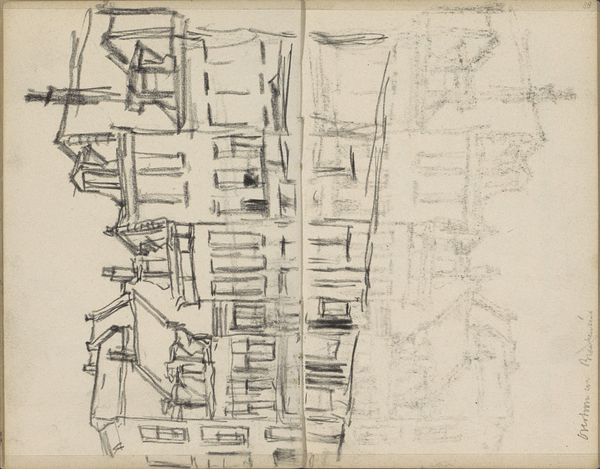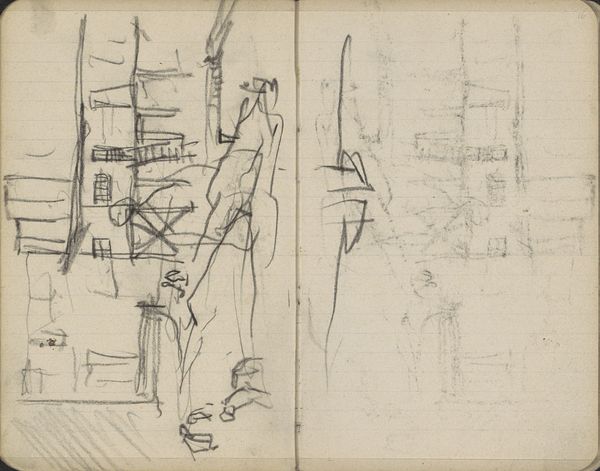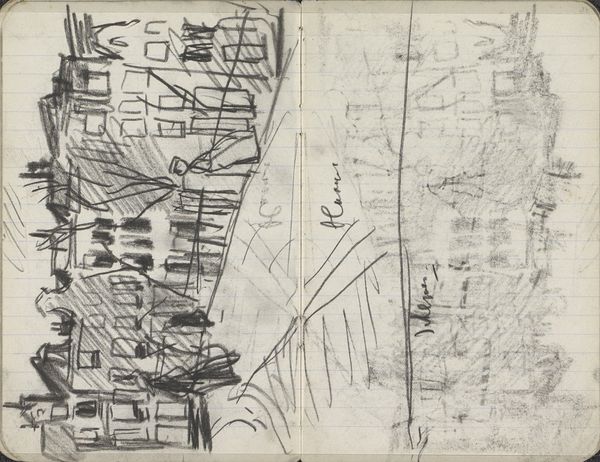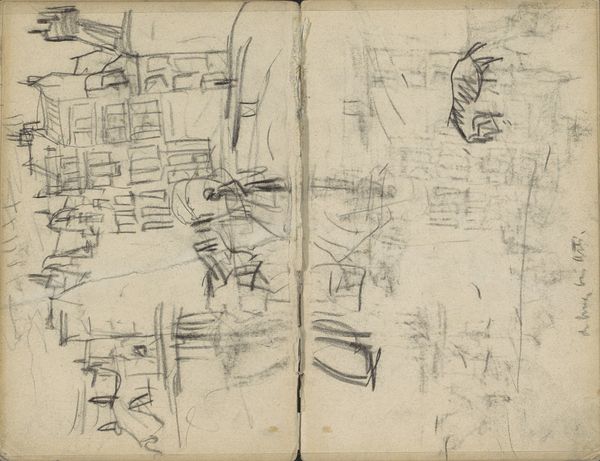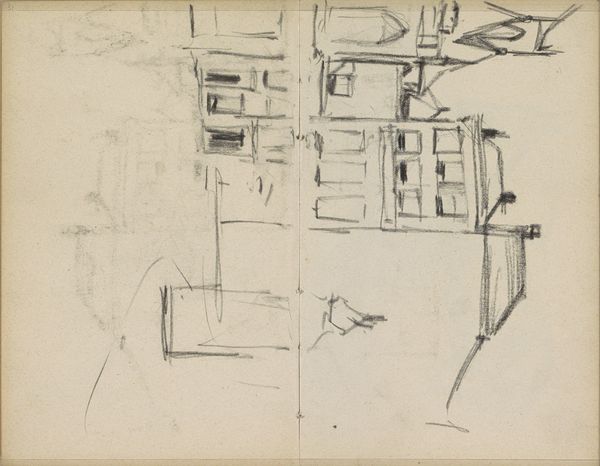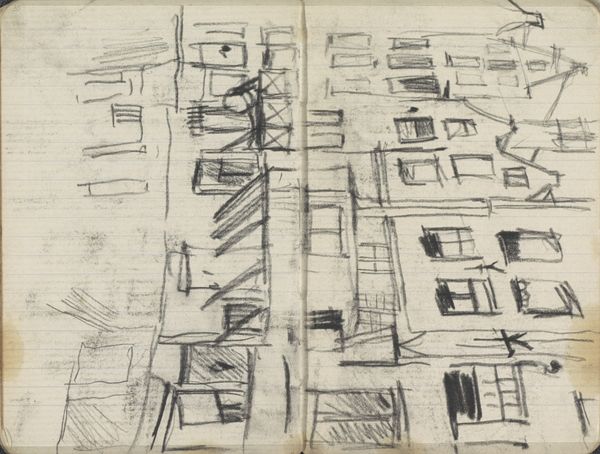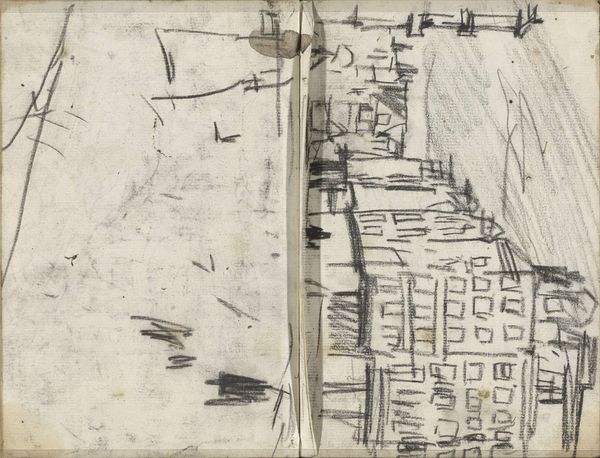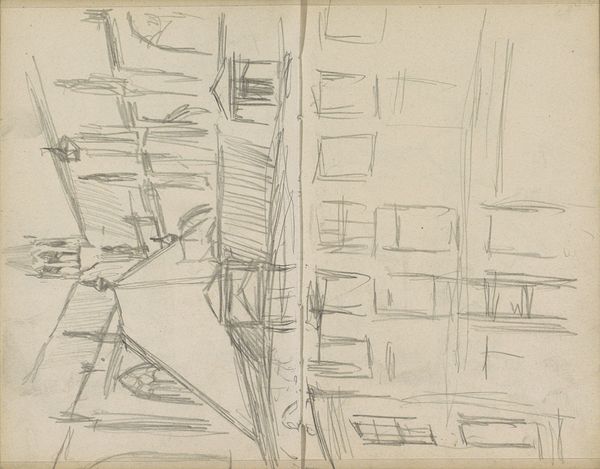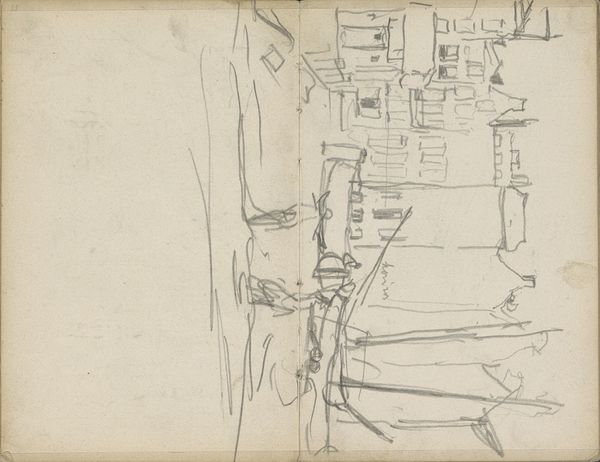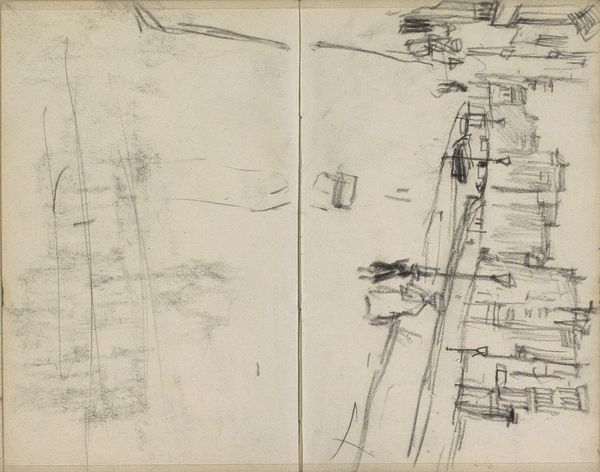
Gezicht op het Damrak te Amsterdam ter hoogte van nummer 28-30 c. 1900 - 1901
0:00
0:00
Copyright: Rijks Museum: Open Domain
Curator: Welcome. Here we have a page from a sketchbook by George Hendrik Breitner, created around 1900-1901, titled “Gezicht op het Damrak te Amsterdam ter hoogte van nummer 28-30”. It's a drawing, primarily in pencil. Editor: It’s fascinating! So raw and immediate. I'm struck by the visible marks of its making. You can almost feel Breitner standing there, quickly capturing the scene. The rapid lines have a rhythmic quality. Curator: Yes, precisely! Look at how the toned paper itself becomes part of the visual experience. The very act of sketching was crucial for Breitner. These sketchbooks became repositories of visual information and demonstrate his working process, his labour in seeing and recording modern life. Editor: I find it interesting how Breitner emphasizes line. It articulates form while still maintaining the two-dimensionality of the paper. The composition, although loose, directs the eye diagonally, creating a dynamic effect within this still cityscape. Curator: Indeed. While the location is carefully recorded in the title, its true value lies in how it demonstrates Breitner’s focus on the fleeting moment. Notice how Breitner does not distinguish between "high art" and quotidian city views. Instead, both become crucial visual material for his work. Editor: What's interesting for me is the tonal value; look how the light shapes our reading. It's evocative of the Amsterdam atmosphere, those constant shifts of light and shadow against the architectural forms. The use of open and closed form emphasizes the contrast between positive and negative spaces on paper. Curator: This artwork also emphasizes the role of personal sketchbooks during this period, showing us that those became essential tools for the modern artist. His sketchbooks point to how art reflects consumption of information through sketching on the move, constantly working with, and processing his experiences with Amsterdam’s landscapes. Editor: Seeing these pages is incredibly revealing about how artists transform observation into visual language, almost like notes for larger compositions, and experiments with light and perspective in an increasingly industrialized setting. Curator: Absolutely. It underscores that the making of art can be both highly cerebral and remarkably tactile. Editor: I agree, a captivating demonstration of the power of pure observation, executed with an economical hand and acute eye!
Comments
No comments
Be the first to comment and join the conversation on the ultimate creative platform.
